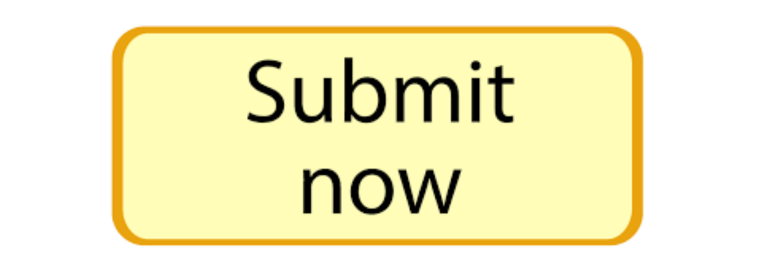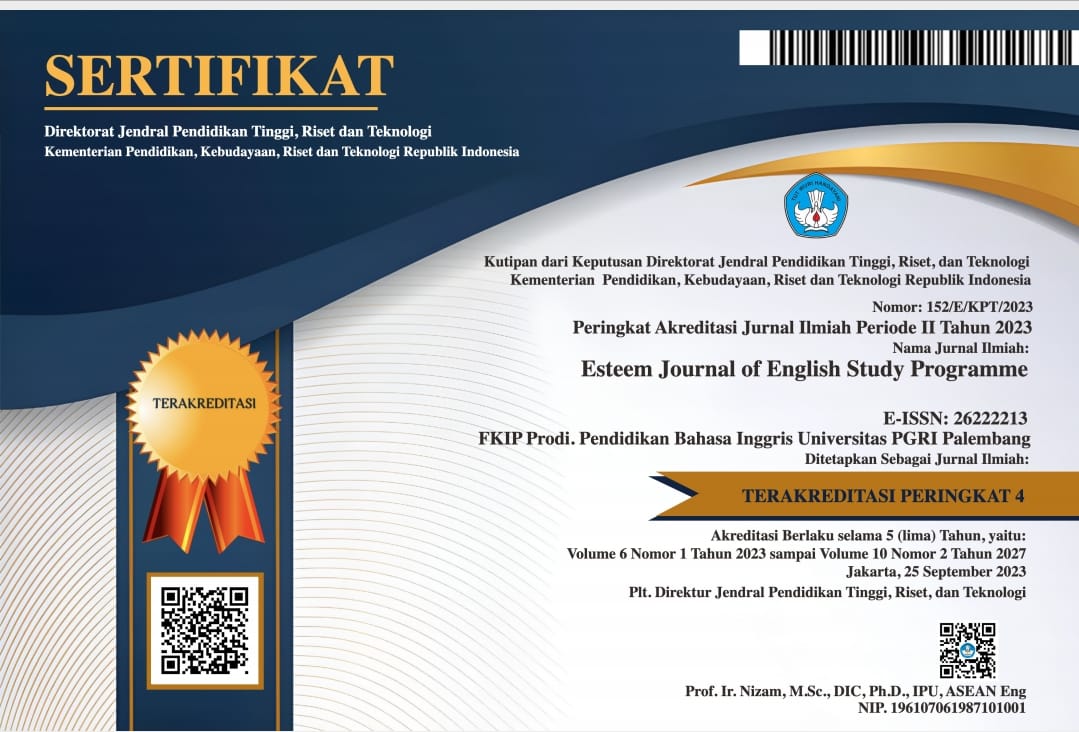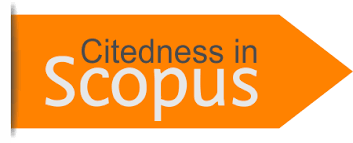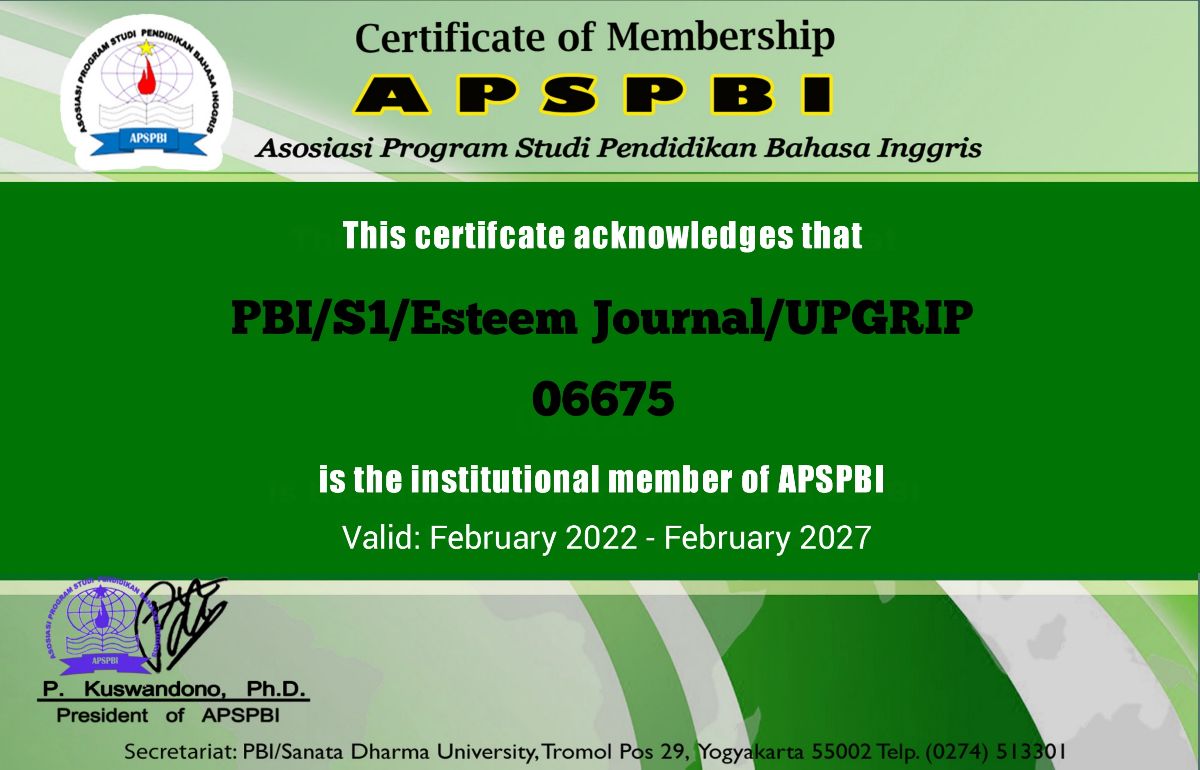JUNIOR HIGH SCHOOL STUDENTS' PERCEPTIONS OF DIGITAL TASK-BASED LEARNING FOR ENHANCING DESCRIPTIVE WRITING SKILLS
DOI:
https://doi.org/10.31851/esteem.v8i1.17898Keywords:
Perceptions, Digital Task-Based Learning, Descriptive, Writing SkillsAbstract
This study explores students' perceptions of task-based digital learning using Padlet to enhance descriptive writing skills. Conducted in a Catholic private school in West Java, the qualitative research involved six seventh-grade English as a second language learners (three high-scoring and three low-scoring) selected from a class of 22 students. Data were collected through face-to-face interviews after students completed descriptive writing tasks on Padlet. Findings revealed positive perceptions of Padlet’s multimedia tools, with students acknowledging that features such as images, videos, and GIFs improved their ability to write descriptively and organize ideas. Students also highlighted enhanced interaction and collaboration during tasks. Despite the benefits, some challenges in using Padlet were noted. The study contributes to educational technology and language learning by showcasing Padlet’s potential to foster creativity, collaboration, and multimedia integration in writing tasks. It provides valuable insights for K-12 and higher education curriculum design, teacher training programs, and the development of user-friendly digital learning tools.
References
Affendi, F., Rostam, F., Noah, J., Arif, F. M., & Yunus, M. M. (2020). Advantages of integrating Padlet as a pre-writing strategy. International Journal of Scientific and Technology Research, 9(3), 137–143.
Algraini, F. N. A. (2014). The Effect of Using Padlet on Enhancing EFL Writing Performance. Al-Imam Muhammad Ibn Saud Islamic University, College of Languages and Translation, Department of English Language and Literature.
Anderson, J., & Macleroy, V. (2017). Connecting worlds: Interculturality, identity and multilingual digital stories in the making. Language and Intercultural Communication, 17(4), 494-517. https://doi.org/10.1080/14708477.2017.1375592:contentReference[oaicite:0]{index=0}
Awaludin, A., Rahmat, M. S., & Nuryanti, S. (2017). The use of Padlet to enhance students' writing performance in higher education. Journal of Education and Social Sciences, 8(1), 181-186.
Brown, H. D. (2004). Language assesment: principles and classroom practices. New York: Longman.
Dardjito, T., Irawan, M. S., & Sari, Y. (2021). The Effect of Teaching Descriptive Text on Students' Writing Ability. Journal of English Language Teaching, 10(1), 1-10. Retrieved from link to article.
Deni, A. R. M., & Zainal, Z. I. (2018). Padlet as an educational tool: Pedagogical considerations and lessons learned. Paper presented at the Proceedings of the 10th International Conference on Education Technology and Computer.
Etfita, F., Wahyuni, S., Satriani, E., Alber, A., & Asnawi, A. (2022). Exploring the use of Padlet in synchronous learning: Students’ perceptions of its advantages and disadvantages. Journal of English Language Teaching and Linguistics, 7(2), 271-282. https://doi.org/10.24071/jeltl.v7i2.3711
Fuchs, B. (2014). The writing is on the wall: Using Padlet for whole-class engagement. LOEX Quarterly, 40(4), 7–9.
Gilabert, R., Barón, J., & Llanes, À. (2009). Manipulating task complexity across task types and its impact on learners’ interaction during oral performance. International Review of Applied Linguistics in Language Teaching, 47(3), 367–395.Rashid, A. A., Yunus, M. M., & Wahi, W. (2019). Using Padlet for collaborative writing among ESL learners. Creative Education, 10(3), 610-620. https://doi.org/10.4236/ce.2019.103046
González-Lloret, M., & Ortega, L. (2014). Technology-mediated TBLT: Researching technology and tasks. John Benjamins.
Graham, S., & Perin, D. (2007). Writing next: Effective strategies to improve writing of adolescents in middle and high schools. Alliance for Excellent Education.
Hennessy, S., London, P., & Hennessy, K. (2016). Exploring the use of video recordings to enhance the quality of classroom observations. International Journal of Research & Method in Education, 39(3), 290-307. https://doi.org/10.1080/1743727X.2015.1130504
Huang, F., & Sun, L. (2023). Examining the roles of technology in sustaining language teaching and learning. Language Learning and Technology, 27(1), 45–63.
Lai, C., & Li, G. (2011). Technology and task-based language teaching: A review of the literature. Journal of Educational Technology & Society, 14(3), 93–103.
Lesiana, N., Mulyadi, Aswadi Jaya, & Pratiwi, E. (2023). Classroom Interaction in Communicative Language Teaching of Secondary School. Esteem Journal of English Education Study Programme, 7(1), 61–71. https://doi.org/10.31851/esteem.v7i1.12661
Lestari, S. (2016). The use of Padlet application in improving writing ability among non-English department students. Journal of Language and Literature, 7(4), 145–150.
Mahmud, M. (2019). Using Padlet as a learning tool in ESL writing courses: An analysis of student interactions. Journal of Language Teaching and Research, 10(3), 687–693.
Miles, M. B., Huberman, A. M., & Saldana, J. (2014). Qualitative data analysis: A methods sourcebook (3rd ed.). Sage Publications.
Mustika, H., Udin, U., & Susanti, N. W. M. (2020). An Analysis of Students’ Difficulties in Writing Recount Text: A Case Study at The Eleventh Grade Students of MA Putra Alishlahuddiny Kediri Academic Year 2016/2017. Indonesian Journal of Teacher Education, 1(1), 1–10.
Novianto, A. (2022). Padlet as Learning Media to Improve Students’ Writing Skills: EFL Teacher’s and Students’ Perspective. Journal of English Education Program (JEEP), 11(1), 73-84. doi: http://dx.doi.org/10.25157/(jeep).v11i1.13563
Patton, M. Q. (2002). Qualitative research and evaluation methods (3rd ed.). Sage Publications.
Putri, A. D., Jaya, A., & Marleni, M. (2023). Exploring the Students’ Speaking Ability Based on Their Different Personalities. Esteem Journal of English Education Study Programme, 6(1), 10–16. https://doi.org/10.31851/esteem.v6i1.10203
Stockwell, G., & Hubbard, P. (2013). Digital tools for task-based language learning: Affordances, challenges, and future directions. ReCALL, 25(3), 270–289.
Sudiana, A., & Hidayati, N. (2020). Teaching Descriptive Text through Genre-Based Approach: A Case Study in a Junior High School. English Language Teaching, 13(5), 53-61. doi:10.5539/elt.v13n5p53.
Sukma, D. (2015). A Study On Writing Recount Text. Journal of English Education, 1(1), 65–72.
Suncaka, E. (2023). Meninjau Permasalahan Rendahnya Kualitas Pendidikan di Indonesia . UNISAN Jurnal, 2(3), 36–49. Retrieved from http://journal.an-nur.ac.id/index.php/unisanjournal/article/view/1234
Suryani, I., & Daulay, S. H. (2022). Students’ Perceptions on Writing Activities by Using Padlet Application. Proceedings of the English Language Teaching, Literature, and Translation (ELTLT), 11(1), 175. Universitas Islam Negeri Sumatera Utara, Medan, Indonesia.
Rashid, N., Yunus, M. M., & Wahi, W. (2019). Using Padlet for collaborative writing among ESL learners. International Journal of Innovative Computing, 10(2), 45-52.
Reka Ramachandiran, C., & Maria Mahmud, M. (2018). Padlet: A Technology Tool for the 21st Century Students Skills Assessment. Puspendik, 101–107. https://doi.org/10.26499/iceap.v1i1.81
Rusmawan, P. N. (2017). Genre based Approach to Teach Writing Descriptive Text. JEES (Journal of English Educators Society), 2(2), 119-134. https://doi.org/10.21070/jees.v2i2.875
Wahyuni, S. (2023). The effectiveness of Padlet as an instructional media to improve students’ performance in writing descriptive text. RETAIN (Research on English Language Teaching in Indonesia), 11(2), 30–37.
Windi, & Suryaman. (2022). Improving Students’ Ability in Writing Descriptive Text Through Contextual Teaching and Learning Approach. Journal of English Language Teaching.
Yunus, M. M., Salehi, H., & Amini, M. (2019). Impact of digital task-based language teaching on students' writing motivation and creativity. Teaching English with Technology, 19(1), 3–22.
Downloads
Published
Issue
Section
License
Copyright (c) 2025 Ivonie Gunawan, Rizki Nurfida Pambayun

This work is licensed under a Creative Commons Attribution-NonCommercial-ShareAlike 4.0 International License.
Copyright Notice
Authors who publish with this journal agree to the following terms:
In order to assure the highest standards for published articles, a peer review policy is applied. In pursue of the compliance with academic standards, all parties involved in the publishing process (the authors, the editors and the editorial board and the reviewers) agree to meet the responsibilities stated below in accordance to the Journal publication ethics and malpractice statement.
Duties of Authors:
- The author(s) warrant that the submitted article is an original work, which has not been previously published, and that they have obtained an agreement from any co-author(s) prior to the manuscript’s submission;
- The author(s) should not submit articles describing essentially the same research to more than one journal;
- The authors(s) make certain that the manuscript meets the terms of the Manuscript Submission Guideline regarding appropriate academic citation and that no copyright infringement occurs;
- The authors(s) should inform the editors about any conflict of interests and report any errors they subsequently, discover in their manuscript.
Duties of Editors and the Editorial Board:
- The editors, together with the editorial board, are responsible for deciding upon the publication or rejection of the submitted manuscripts based only on their originality, significance, and relevance to the domains of the journal;
- The editors evaluate the manuscripts compliance with academic criteria, the domains of the journal and the guidelines;
- The editors must at all times respect the confidentiality of any information pertaining to the submitted manuscripts;
- The editors assign the review of each manuscript to two reviewers chosen according to their domains of expertise. The editors must take into account any conflict of interest reported by the authors and the reviewers.
- The editors must ensure that the comments and recommendations of the reviewers are sent to the author(s) in due time and that the manuscripts are returned to the editors, who take the final decision to publish them or not.
Authors are permitted and encouraged to post online a pre-publication manuscript (but not the Publisher final formatted PDF version of the Work) in institutional repositories or on their Websites prior to and during the submission process, as it can lead to productive exchanges, as well as earlier and greater citation of published work (see The Effect of Open Access). Any such posting made before acceptance and publication of the Work shall be updated upon publication to include a reference to the Publisher-assigned DOI (Digital Object Identifier) and a link to the online abstract for the final published Work in the Journal.





























